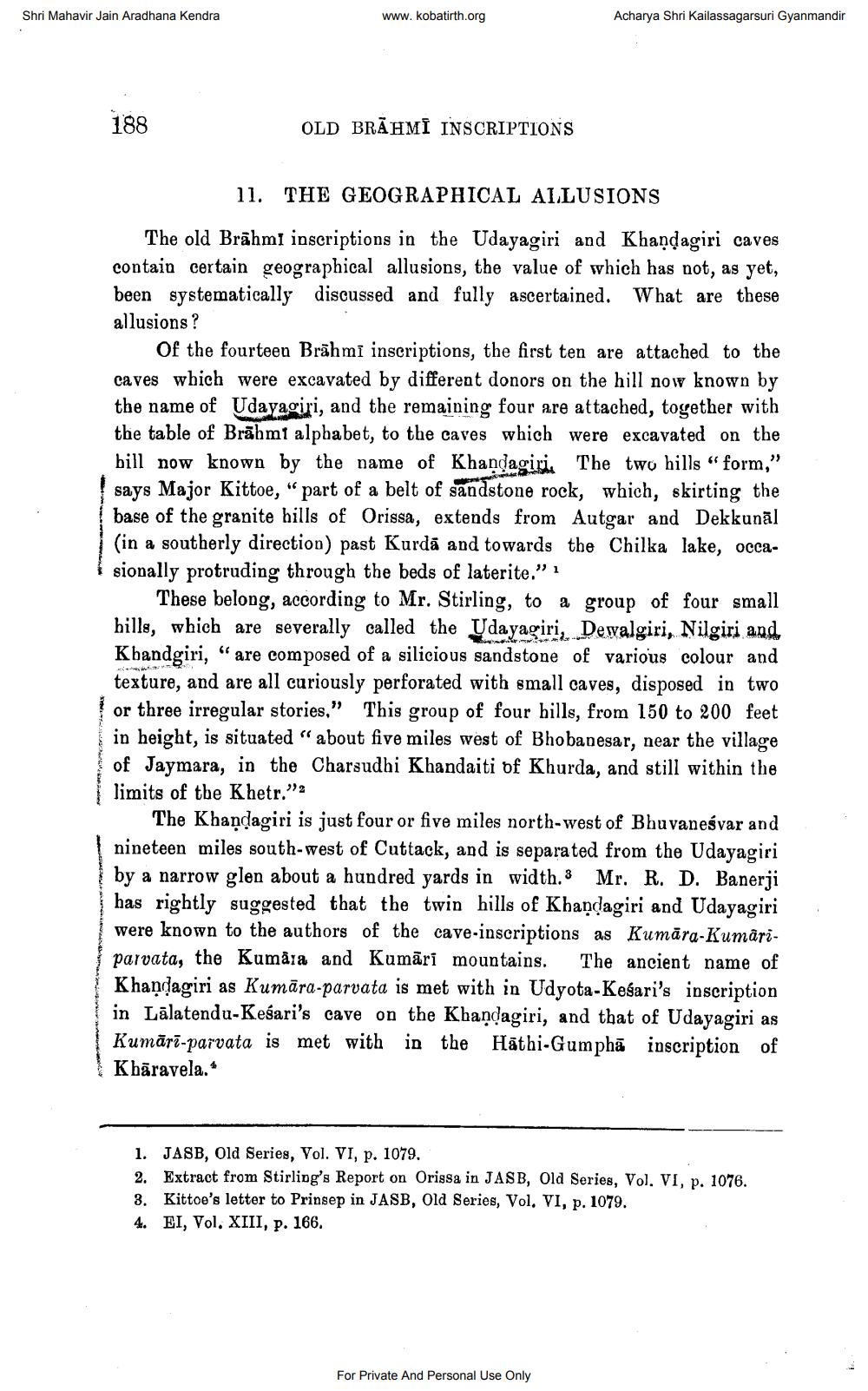________________
Shri Mahavir Jain Aradhana Kendra
188
www.kobatirth.org
OLD BRAHMI INSCRIPTIONS
Acharya Shri Kailassagarsuri Gyanmandir
11. THE GEOGRAPHICAL ALLUSIONS
The old Brahmi inscriptions in the Udayagiri and Khandagiri caves contain certain geographical allusions, the value of which has not, as yet, been systematically discussed and fully ascertained. What are these allusions?
Of the fourteen Brahmi inscriptions, the first ten are attached to the caves which were excavated by different donors on the hill now known by the name of Udayagiri, and the remaining four are attached, together with the table of Brahmt alphabet, to the caves which were excavated on the bill now known by the name of Khandagiri The two hills "form," says Major Kittoe, "part of a belt of sandstone rock, which, skirting the base of the granite hills of Orissa, extends from Autgar and Dekkunal (in a southerly direction) past Kurda and towards the Chilka lake, occasionally protruding through the beds of laterite." 1
"C
These belong, according to Mr. Stirling, to a group of four small hills, which are severally called the Udayagiri, Dewalgiri, Nilgiri and Khandgiri, are composed of a silicious sandstone of various colour and texture, and are all curiously perforated with small caves, disposed in two or three irregular stories," This group of four hills, from 150 to 200 feet in height, is situated "about five miles west of Bhobanesar, near the village of Jaymara, in the Charsudhi Khandaiti of Khurda, and still within the limits of the Khetr."
The Khandagiri is just four or five miles north-west of Bhuvanesvar and nineteen miles south-west of Cuttack, and is separated from the Udayagiri by a narrow glen about a hundred yards in width.3 Mr. R. D. Banerji has rightly suggested that the twin hills of Khandagiri and Udayagiri were known to the authors of the cave-inscriptions as Kumara-Kumāriparvata, the Kumara and Kumārī mountains. The ancient name of Khandagiri as Kumara-parvata is met with in Udyota-Kesari's inscription in Lalatendu-Kesari's cave on the Khandagiri, and that of Udayagiri as Kumari-parvata is met with in the Hathi-Gumpha inscription of Khāravela.*
1. JASB, Old Series, Vol. VI, p. 1079.
2. Extract from Stirling's Report on Orissa in JASB, Old Series, Vol. VI, p. 1076. 3. Kittoe's letter to Prinsep in JASB, Old Series, Vol. VI, p. 1079.
4. EI, Vol. XIII, p. 166.
For Private And Personal Use Only




